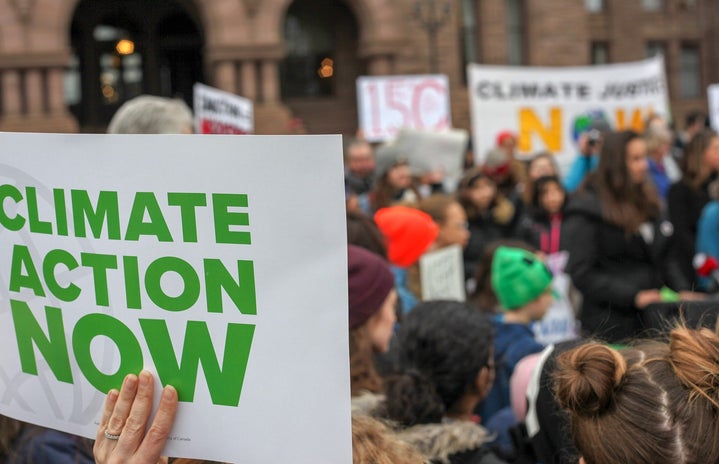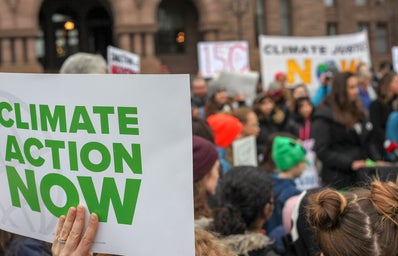The latest IPCC report has provided a clear indication of the impacts of climate breakdown and the possibility of civilisational collapse due to climate disasters. The IPCC stands for the Intergovernmental Panel on Climate Change, which is the scientific group created by the United Nations to address the climate crisis. IPCC members compile and monitor global data related to climate change and environmental concerns, and compile reports that are then made available to the public. This most recent report, called “Climate Change 2022: Impacts, Adaptation and Vulnerability”, is the second working group’s contribution to the IPCC’s Sixth Assessment report (AR6 WGII). It was finalized on 27 February 2022, during the 55th session of the IPCC and the twelfth session of Working Group II.
The Sixth Assessment report consists of statements from three working groups, with the Working Group III’s report planned for early April 2022 and the final Synthesis Report scheduled to be published in September 2022. Each of the reports releases the latest data on climate change, the most pressing current threats, and desirable solutions for reducing increased temperature rises and limiting the effects of climate breakdown. While this report focuses on adaptation and vulnerability in relation to the impacts of climate change, the next assessment will provide further details on prevention.
The findings of the most recent report are similar to past evaluations, especially in its claim that climate change is contributing to more extreme weather occurrences. These weather changes include drastic droughts, storms, wildfires, and floods, as well as other environmental disasters. As the frequency and severity of these environmental occurrences increases, millions of people will be endangered through both direct casualties and the resultant disturbances in food and clean water access. Furthermore, scientists warn that climate change is contributing to compound extremes. Compound extremes describe the threat brought by more than one environmental hazard occurring within the same time and place, at the same time across more than one region, or in sequence. The hazards can include dangerous temperature highs, atmospheric instabilities, increased precipitation, and other meteorological extremes.
Additionally, the study has found that more than 40% of the global population is “highly vulnerable” to climate change. Extreme weather events that have been connected to climate change are having a tangible impact on humans and species globally, through an increase in disasters like floods and droughts. Between 2010 and 2020, approximately 15 times more people died due to floods, heatwaves, and storms in regions within South Asia, Central and South America, Africa, and other vulnerable areas. Humans are witnessing the fatal effects of climate change, and the recent report further indicates the peril that humanity will face in the forthcoming years.
Past inaction and failure to accomplish emission reduction goals have further heightened the intensity of the crisis. The IPCC report has stated that if global temperatures continue to increase by 1.5C annually, which is the goal of the Paris Climate Agreement, then as much as 14% of all land species will face the danger of extinction. Moreover, at a 3C rise, nearly one third of all life on Earth would become extinct. As a result, the assessment has urged the global community to strive towards achieving the UN goal of attaining net zero emissions globally by 2050 and reducing global greenhouse gas emissions by 45% by 2030.
An accelerated rise in sea levels is another pressing threat resulting from climate breakdown. If temperatures continue to rise, the IPCC has estimated that close to a billion more people will be in peril due to coastal environmental hazards within the approaching decades. While urban areas have been considered a contributing factor to greenhouse gas emissions, they can also serve as a revolutionary centre of change. As cities push towards more renewable energy initiatives and greener transportation, they can combat the destructive effects of climate change. Especially within coastal cities, vulnerable people can be protected within the mobilization of urban coastal initiatives.
While the climate crisis has become increasingly dire, there is still hope. Programs that focus on climate resilient initiatives and emissions reductions could slow the process of climate change. In addition to renewable energy and green technological developments, improving education and health systems will protect those who are most vulnerable to the effects of this process. Combating climate change includes not just prevention but also adaptation. The global community must work to help vulnerable populations adapt to the changes that have already arisen. Ecological sustainability and joint collective action is possible, and the new IPCC report is a tangible step in the right direction.


